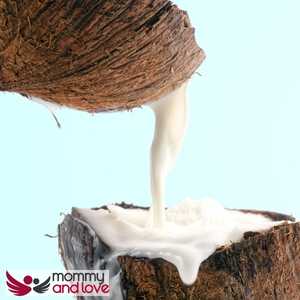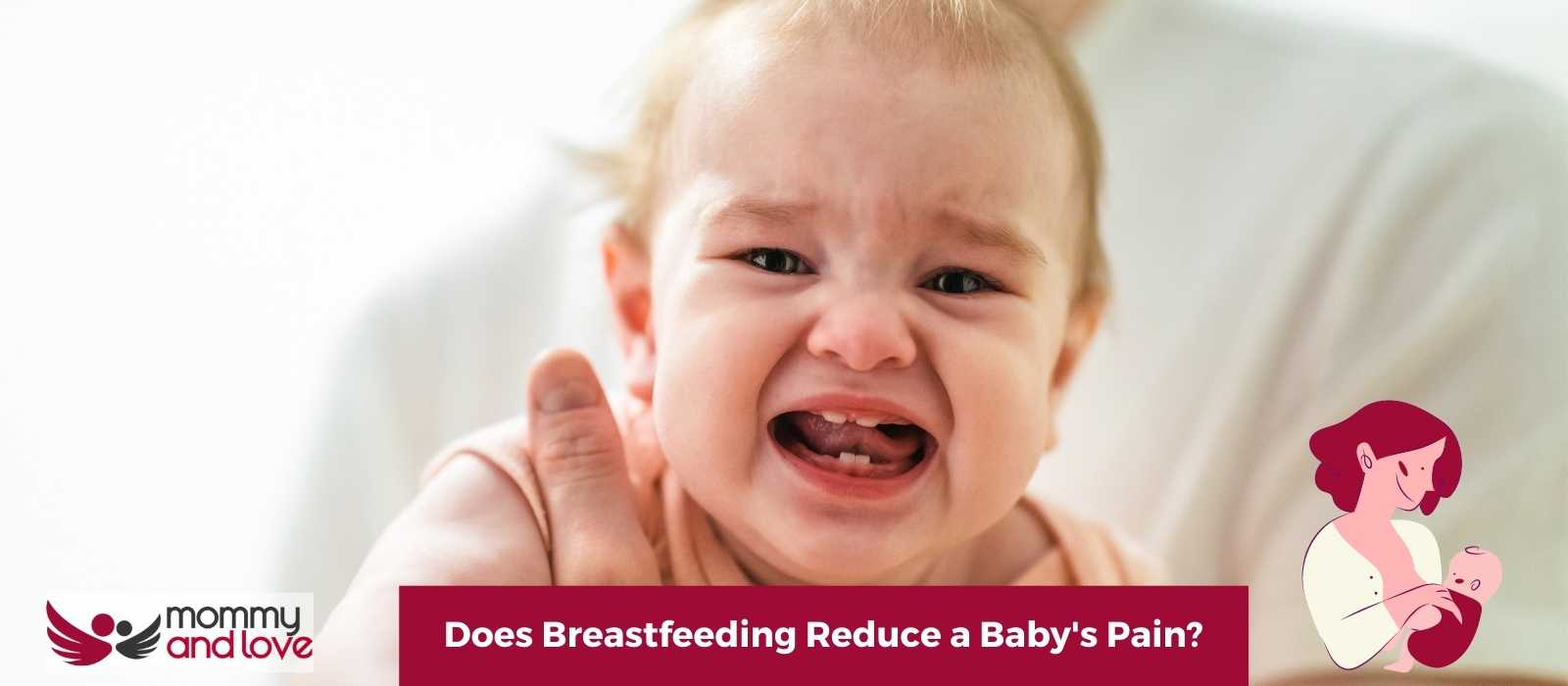Did you know that various international clinical trials and studies have proven that breastfeeding newborn babies reduces pain, it acts as an analgesic for babies?
Nursing moms have often suspected that the way to help their baby through a painful procedure was to breastfeed babies through the procedure, and now this old wives tale has been proven as fact!
Breastfeeding Reduces Vaccination Pain

Research from the University of Ottawa in Canada, for example, has discovered that breastfeeding reduces the pain babies feel when they receive vaccinations or painful procedures.
Babies early childhood vaccinations have always long been a source of pain in the newborn period.
Researchers in the clinically important outcomes reported that feeding newborn babies while they are being given a jab reduces crying time by an average of 38 seconds. They measured behavioural or physiological indicators such as crying and pain responses.
While babies, who were breastfed cried for between fourteen seconds and two minutes when injected, those who were not breastfed cried for between 35 seconds and nearly three minutes. Breastfeeding reduced behavioural pain responses such as length of crying time.
Researchers – who looked at six studies involving 547 babies up to the age of twelve months – concluded that breastfeeding reduce vaccination pain much better than feeding the baby water or a sweet sugar solution, or expressed breast milk.
Breastfeeding Reduced Pain Better Than Soothers
The link between breastfeeding and reduced pain in babies is not, however, exactly new. As far back as 2008, research carried out at Mount Sinai Hospital in Toronto made similar findings.
For that study, neonatologist, Prakeshkumar Shah and his team gathered data from eleven studies of more than 1000 newborns. The trials tested the effectiveness of breastfeeding and breast milk compared to sugar water or soother – to counter the discomfort of the babies’ first blood draw during heel prick tests.
‘The babies who were breastfed,’ Shah said at the time, ‘experienced less pain compared to not giving anything or just swaddling them or giving them a placebo of sterile water.’
Breastfeeding Reduced Painful Procedure Pain
Even further back, in 2004, a study which was published in The British Medical Journal found that allowing babies to breastfeeding newborn infants during painful medical procedures appeared to relieve their degree of pain and show a significant pain reduction.
That particular study observed 180 newborns, who were placed into one of four groups when having blood taken and they were surprised by how much breastfeeding healthy babies during painful procedures reduces pain.
Babies in the first group were allowed to breastfeed, those in the second were held by their mothers but not fed, those in the third group were given water as a placebo, and those in the fourth were given sugar water and a dummy.
Researchers in that study again concluded that breastfeeding is an excellent, natural alternative to prevent or reduce pain during minor daily procedures undergone by neonates. The pain scores were much lower with the breastfed babies.
How does breastfeeding relieve pain?
So, the evidence is certainly there, but why does breast milk help to reduce pain?
Well, breast milk contains lauric acid, which is antiviral, antibacterial, can heal tissue and contains analgesic properties. A World Health Organization (WHO) report, ‘Breastfeeding or breast milk for procedural pain in neonates’ – concluded that:
‘There are sufficient reasons to believe why breast-feeding or feeding breast milk should provide pain relief for procedural pain in neonates. Breast-feeding or breast milk feeding involves the presence of a person who cares for the baby. It involves holding the baby closely, which helps in moderating the painful experience.
There is also skin-to-skin contact with the caregiver and, additionally, breast milk contains agents that have analgesic properties or can be endogenously converted into analgesic substances. Breastfeeding or breast milk feeding is a natural way to achieve analgesia and, unlike sucrose, does not have any adverse effect on successful breast-feeding.’
One of the ‘agents’ referred to in the WHO report is lauric acid. Studies have shown that if a pregnant woman’s diet does not contain sufficient levels of lauric acid, then her breast milk will contain only around three per cent lauric acid. But, when a pregnant or lactating woman adds foods rich in lauric acid to her diet, the levels of lauric acid in her breast milk increase by as much as three times!
But how do you ensure that your own levels of lauric acid are sufficiently high to pass the benefits on to your baby?
Well, you may have become aware recently of the increased interest in – and health benefits of coconut oil, which is actually a rich source of lauric acid.
Indeed, a study, which was published in the American Journal of Clinical Nutrition in 1998, concluded that breastfeeding women, who consumed coconut oil and other coconut products on a regular basis, had significantly higher levels of lauric acid in their breast milk.
If you’re pregnant and want to increase the levels of lauric acid in your breast milk for when you give birth and begin to breast feed, then it’s a good idea to consume coconut oil on a daily basis. This will ensure that, as your body begins to store fat in anticipation of lactation, the excess lauric acid stored within your fat supply will be incorporated into your breast milk as you start the process of lactation.
Foods which contain lauric acid include:
Coconuts

To obtain the full benefits of lauric acid from coconuts, try cooking in coconut oil, adding coconut milk to curries, or blending shredded coconut in protein shakes or smoothies.
Coconut oil is roughly half lauric acid, so it has about six and a half grams per tablespoon.
Palm kernel oil
Lauric acid is also present in high amounts in palm kernel oil. In fact, the fatty acid ratio in palm kernel oil is very similar to that of coconut oil. Make sure you get palm kernel oil though, as regular palm oil contains very little lauric acid.
Milk
Human breast milk has the highest levels of lauric acid in any milk, but cow’s milk and goat’s milk are also good sources. Lauric acid makes up just under three per cent of the total fat in cow’s milk and just over three per cent per cent of the fat in goat’s milk.
Did you know?
On the Island of Dominica in the Caribbean, it is customer for the Carib Indians to ‘welcome’ a new infant with a ceremony that takes place approximately three weeks after its birth. Part of this ceremony involves women gathering at the new baby’s home and, after a brief naming ceremony, pampering the baby with ritualistic massages. These massages, which continue for the greater part of a week, and which take place three times a day, are all centered around the use of coconut oil.
The women begin the massages by rubbing coconut oil into the soft spot on the top of the baby’s head and then work their down its body. Small amounts of coconut oil are also sometimes fed to the baby.
Does breastfeeding reduce teething pain?
Yes, as the studies reported breastfeeding offers pain relief to young babies and this includes teething pain. Some of the reasons for this could be the skin to skin contact, the comfort from nursing and the feeling of security of being close to their mother or possibly endogenous opiates present in the milk.
Breastfeeding takes away the pain….
Whilst it’s not known exactly why, the effects of breastfeeding in reducing infant pain, time after time in international studies the effect has been that breastfed babies cried less whether receiving early childhood immunisation or in teething when they are being breastfed.
So great job mama!

This article was written by Sandra Baker – full time writer and the mother of four amazing kids (including twins!)
She’s also a breastfeeding counselor and has spent years helping new parents learn how to care for their children. When she’s not writing or caring for her children, Sandra likes to spend time reading and taking walks with her husband.




